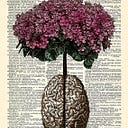Member-only story
Can we use conditioning to boost our immune system?
How hijacking our immune response could lead to future medical treatments
At chemotherapy treatment centers, healthcare professionals tell a common anecdote. Patients will often experience nausea while being treated with chemotherapeutic drugs. But for some, the nausea comes prematurely: the simple act of sitting down for the treatment can trigger it.
The explanation for this ‘anticipatory nausea’ is most likely conditioning. Over the course of several months, the patient repeats the routine of sitting in the same room, receiving a drug, and becoming nauseous. Eventually, the environment alone is enough to bring about their nausea.
If conditioning is powerful enough to cause nausea, can it be used for positive outcomes — for example, to boost our immune systems? In this article, we’ll explore how a study conducted by Longo et al. (1999) suggests that we can do exactly such a thing, opening the door to a new world of medical treatments.
Immune conditioning
The basic components of conditioning can be explained using Pavlov’s famous dogs. A serving of meat acts as the unconditioned stimulus, which evokes salivation, the unconditioned response. The sound of a bell acts as the conditioned stimulus…
